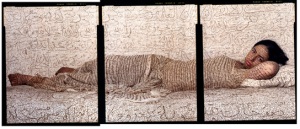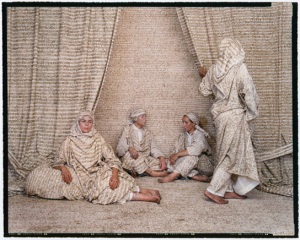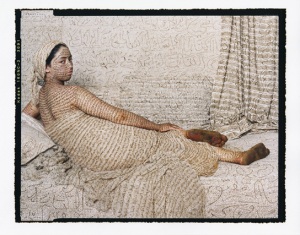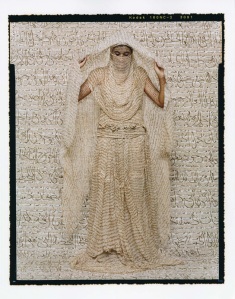Women Artists Challenge Boundaries of Sculpture and Ceramics at Lacoste Gallery, Concord
As a longtime admire of the Lucy Lacoste gallery in Concord, MA, I was honored when Lucy asked me to write a press release for the show that opens there tomorrow. What follows is essentially a paid post–which the gallery has expanded on its Website.
In the show, “Articulating Space,” at 25 Main Street, two female artists challenge the boundaries of traditional ceramics and contemporary sculpture.
Both artists, Josephine Burr and Lily Fein, use the centuries-old technique of coiling and pinching clay to build forms, rather than rely on clay slabs or the potters wheel. Yet their work is highly modern—taking unusual shapes, embracing light in new ways, and shifting the expected boundaries of artist, object, viewer and artistic convention. Each artist takes a unique approach, Lacoste explains.
Lily Fein
Fein’s work tends to be intuitive and, in this exhibition, figurative, with vessels suggesting or relating to the human body.

Fein explains that while her pieces often evoke bodily forms, she sometimes challenges this metaphor “so that the distinctions between the interior or exterior of the vessel invert, touch, or disappear.
“I encourage the objects to morph and change as I create them, developing a language of improvisation that gives form to a stream-of-consciousness approach to making. I am interested in how a clay form can capture, imply or perpetuate movement… defying the nature of the role we’re taught [that] objects occupy in our world.”
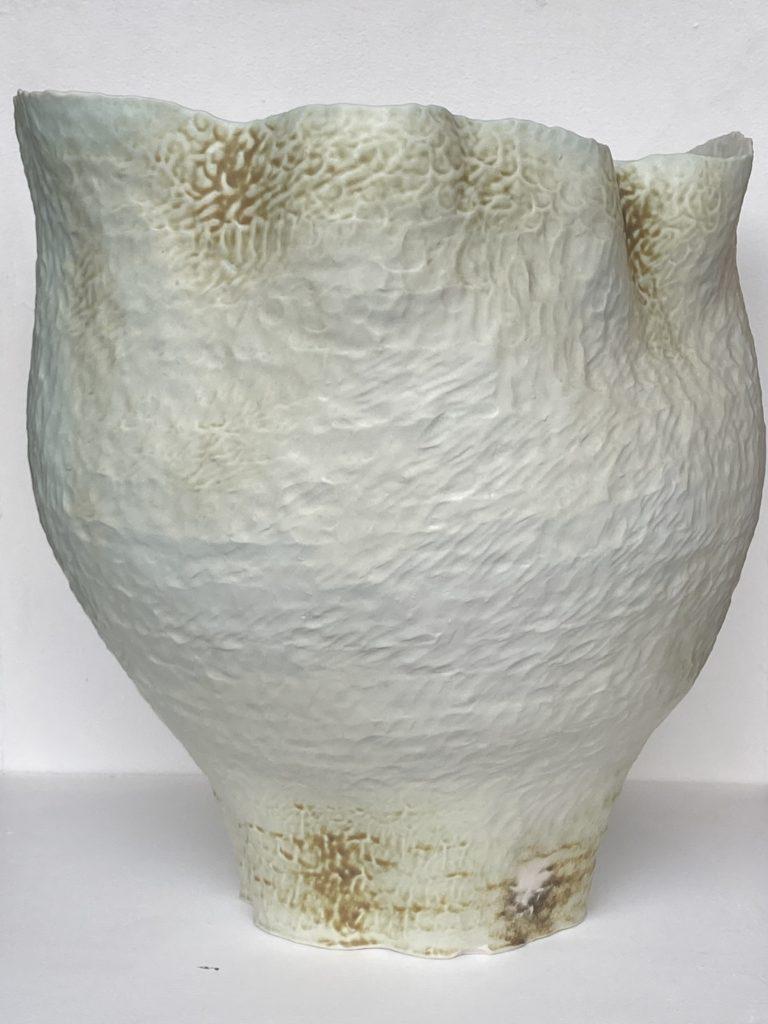
A 2016 graduate of Syracuse University in 2016], Fein has won numerous awards; held residencies in Massachusetts, Minnesota, Montana, New York, and Japan; and exhibited in Louisiana, Massachusetts, Missouri, New York, Oregon, Montana, and Washington State. Born in Newton, MA, Fein currently resides in New Orleans.
Josephine Burr
Burr, a professor of ceramics at Massachusetts College of Art and Design, raises questions of interiority and objecthood (or: duration/temporality), according to Lucy Lacoste, the gallery owner “Some of her pieces are unusually large for ceramics—and she sometimes punches holes in the clay to allow light—and her own energy—to shine through.”
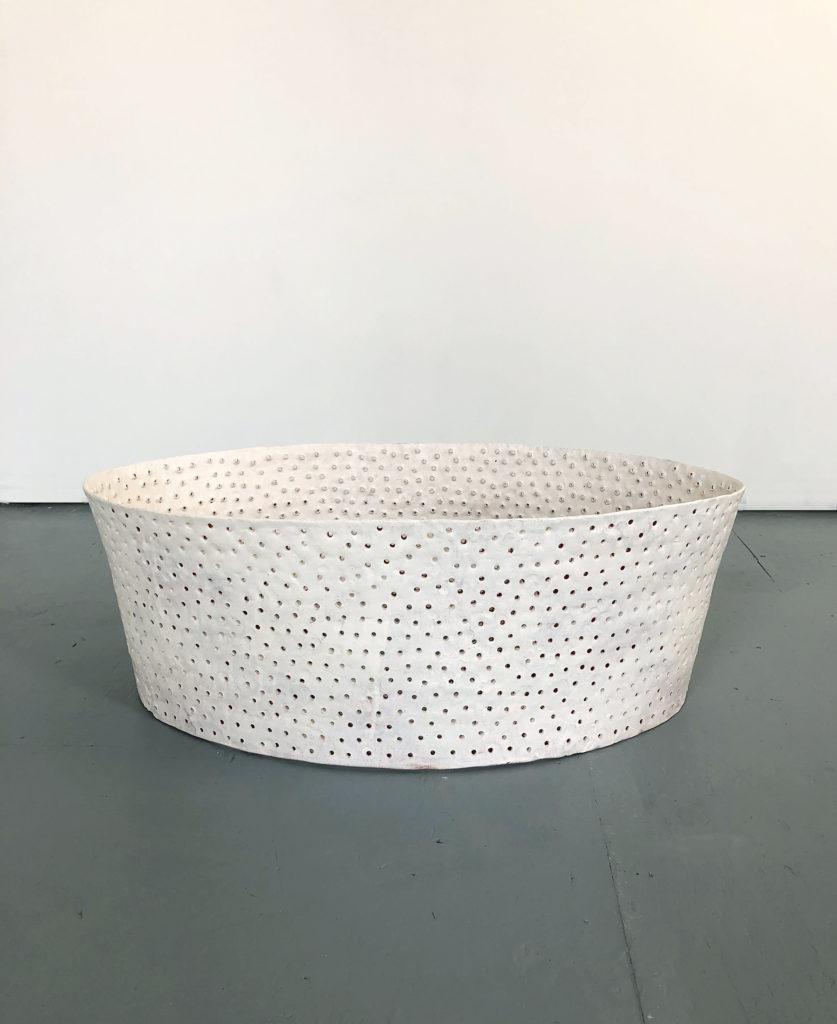
Burr explains that the “language” of clay is “mute and absorbent… a holder of time and of the unnoticed, of the underpinnings of consciousness and of daily life.” In her work, she probes at this “unnoticed space, coaxing the temporary and fleeting quality of experience into visible, tactile form.”
Her sculptures “echo familiar objects but confound their meaning—pinched to hold passing time, shifting light, the fragile uncertainty of being,” she says. “Boundaries are intentionally blurred: between interior and exterior space; between pot and sculpture; between object and drawing.
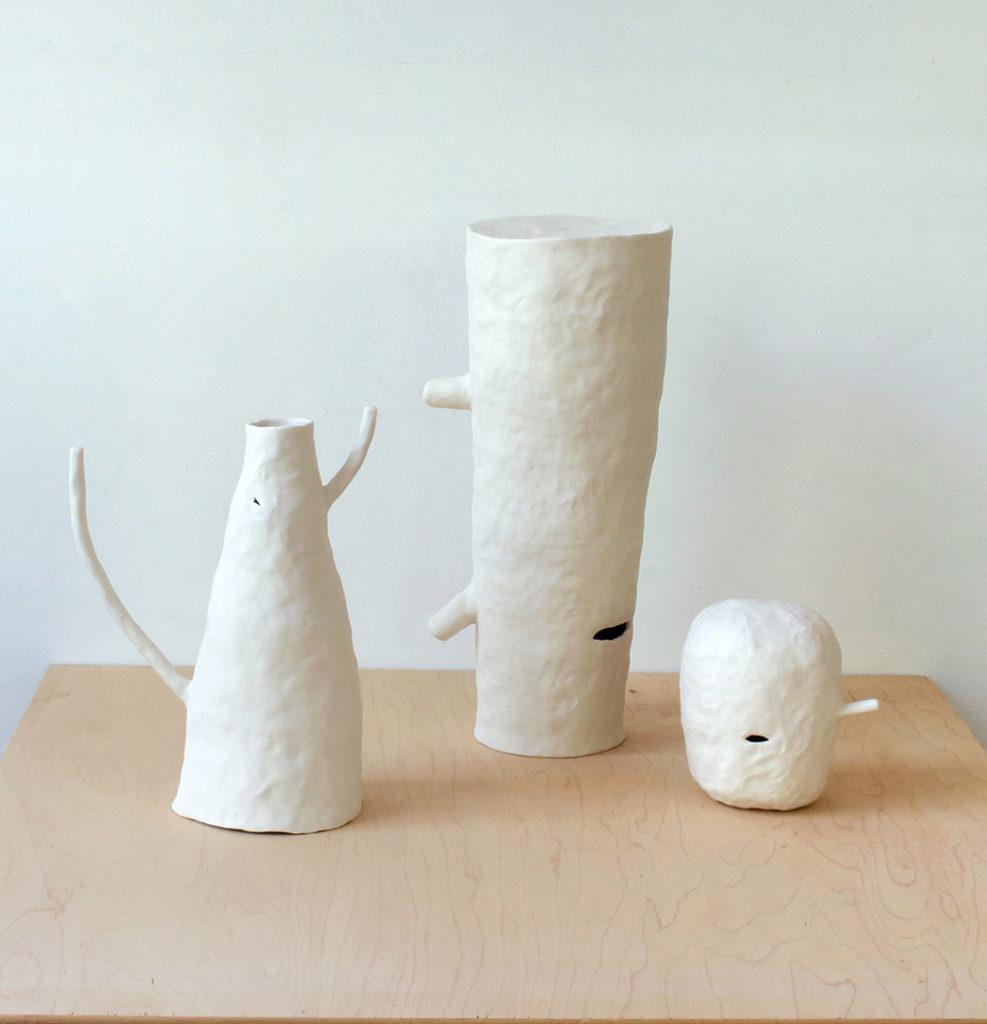
“While clay as a material speaks of the familiar, the concrete and the immutable,” she says, “it also carries a sense of transition, fragility and porousness.” For Burr, “making becomes an act of tactile listening, attending fully to that fragile terrain at the edge of perception… Balance and trust are essential to this process. It is my hope that the work invites the viewer to recognize and rest in that space.”
Burr’s latest approach embraces and interrogates the boundaries of both two- and three-dimensional work. In her ‘still life’ An alphabet of makeshift days, #2 (winter light)—three small sculptural vessels rest on a shelf, a clay ring set against the wall, behind—Burr invites the viewer to consider the continuity and difference between her own work and the art historical lexicon.
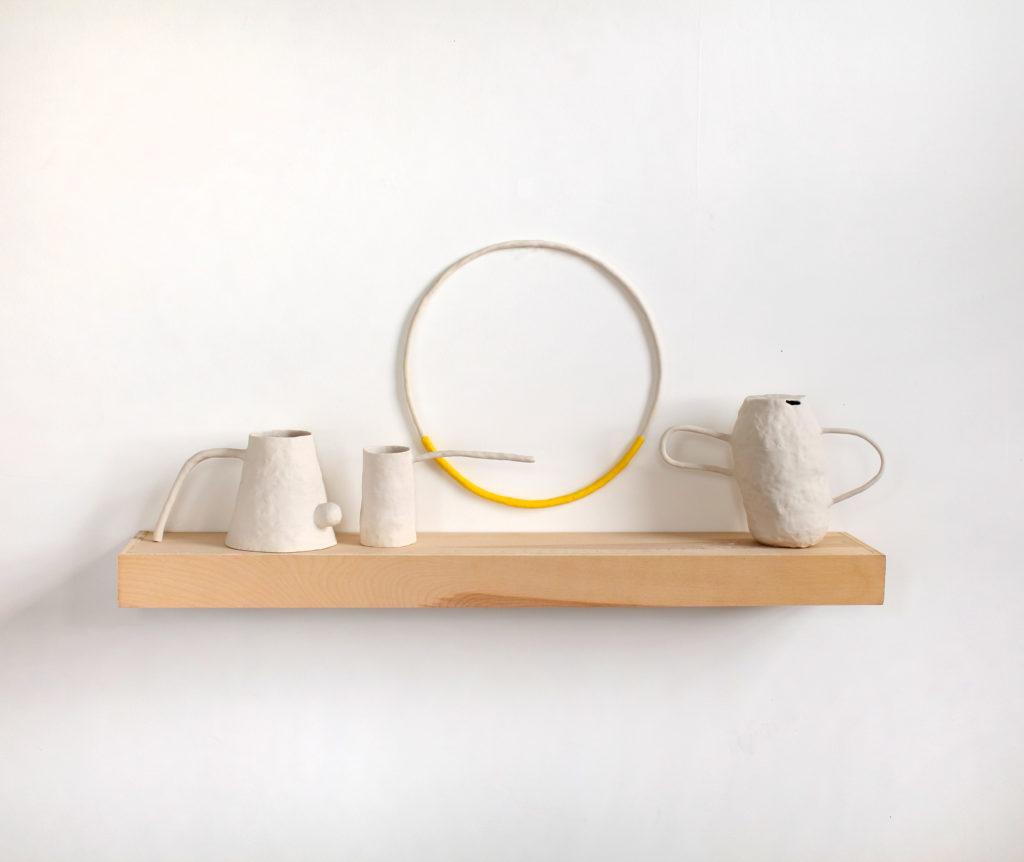
Professor Burr, who lives in Hyde Park, MA, has held residencies and/or exhibited in Massachusetts, Maine, Houston, Philadelphia, New York, Texas, Vermont and Iceland. She is a 2021 nominee for the Boston Foundation’s Brother Thomas Fellowship.
Lacoste is “delighted to share the work of two insightful artists who are making important contributions to the increasingly synergistic worlds of ceramics and sculpture,” she says.
Articulating Space will be open through August 7, 2021. Both Fein and Burr will attend the opening reception on July 10th from 3 – 5 PM, with artists’ remarks at 4 PM.
Articulating Space will transition into an online exhibition on Saturday, July 17th to accommodate gallery renovation.
–-Anita M. Harris
New Cambridge Observer is a publication of the Harris Communications Group, in Cambridge, MA.

